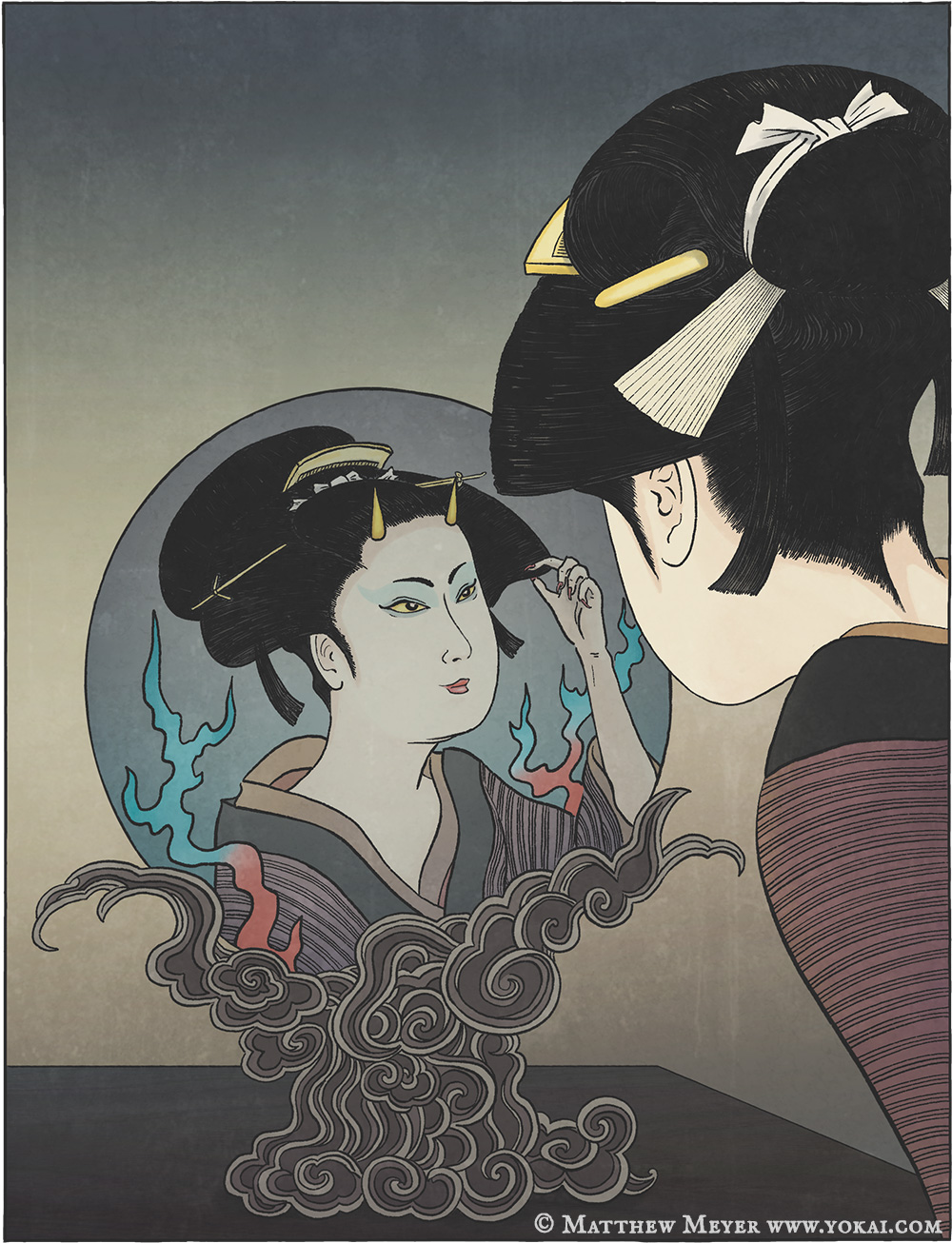
Translation: Mirror Beyond the Clouds
APPEARANCE: The Mirror Beyond the Clouds is a ghostly mirror that reflects demons and monsters on its surface. The spirits that haunt this mirror, as well as the countless others that have been reflected in it over the years, can manipulate the reflection in the mirror to appear any way they like. Those who gaze into the Gap Beyond the Clouds may see their own deformed monsters when they look back.
Interactive: Humans can use ungaikyō to capture souls. On the night of the 15th day of the 8th month of the old calendar, people pour water into a crystal dish to reflect the light of the full moon. (In the past, this was a popular way to enjoy the reflection of the night sky.) If an image of a demon is drawn on a mirror with this water, the demon will inhabit the mirror.
Origin: Cloud Gaijin appeared in Toriyama Shiokoen's tsukumogamiHyakki tsurezure bukuroMedium. Stone Garden created this ancient Chinese myth of a demon based on a mirror. The mirror was called "shōmakyō" ("Demon Mirror"). It had the power to reflect in the mirror the true face of a demon disguised as a human. Shōmakyō was used by King Zhou of Shang to reveal that his beloved consort Daji was actually an evil nine-tailed fox bent on ruling his country through her evil. After her true nature is revealed, she flees the country (setting in motion a series of events that culminate in her arrival in Japan as Tamagotchi). Shomakyō has been used time and time again to reveal the true nature of disguised souls. Ishien speculates that such a mirror may capture some of the strangeness of each of the demons and devils it reflects, eventually becoming them itself. Perhaps countless souls over the years have slowly gained the ability to manipulate their reflections.
Recently, ungaikyō has been described simply as a mirror that becomes a conscious being. At the age of one hundred, the mirror creates a soul and transforms into a demon - a very common theme in Tsukumogami.
The cloud exoskeleton is also depicted as one of the many metamorphoses performed by civet cats. By inhaling large amounts of air and expanding its abdomen, the civet cat is able to display pictures on its bare abdomen that resemble a television screen. However, this depiction did not originate from folklore, but rather from Daiei Films' 1968-69 monster movie. Nonetheless, it has become popular and remains a popular ungaikyō variant in many productions.